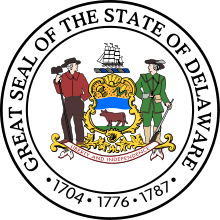Killcohook National Wildlife Refuge
| Killcohook National Wildlife Refuge | |
|---|---|
 | |
| Location | New Castle County, Delaware, United States |
| Nearest city | Pennsville, New Jersey |
| Coordinates | 39°37′03″N 75°33′48″W / 39.617423°N 75.56345°WCoordinates: 39°37′03″N 75°33′48″W / 39.617423°N 75.56345°W |
| Established | February 3, 1934 [1] |
| Governing body | Corps of Engineers |
Killcohook National Wildlife Refuge (founded as Killcohook Migratory Bird Refuge) was a National Wildlife Refuge located on the east bank of the Delaware River adjacent to the current Supawna Meadows National Wildlife Refuge. It had originally been established in 1934 as a secondary dredged material disposal site for use by the Army Corps of Engineers.[2] Its status as a refuge was revoked in 1998 by the U.S. Congress and it is currently used as a confined disposal facility by the U.S. Army Corps of Engineers.
Geography
The former refuge is part of New Castle County, Delaware. As outlined by the Twelve-Mile Circle, a colonial era agreement, Killcohook is one of two places in Delaware that shares a land border with New Jersey, called Finn's Point. Since the border was originally defined as being along the low water mark on the New Jersey shore of the river, reclaimed land on which the refuge lies falls within Delaware territory.
The former wildlife refuge is north of the Fort Mott State Park and south of Pennsville, New Jersey. Across the Delaware River are Ommelanden Range near Bear, Delaware and Delaware City. Fort Delaware State Park on Pea Patch Island lies between the two shores.
Wildlife
Killcohook NWR consisted primarily of marshland, with emphasis on breeding of migratory waterfowl. Species singled out for protection in Killcohook include the American black duck.[3]
See also
References
- ↑ "The Killcohook Migratory Bird Refuge", Science, vol. 79, 23 March 1934
- ↑ "Supawna Meadows National Wildlife Refuge". US Fish & Wildlife Service. Retrieved December 24, 2013.
- ↑ Danzenbaker, Mike (2008). "Supawna Meadows" (PDF). Fish and Wildlife Service. Retrieved October 24, 2016.
